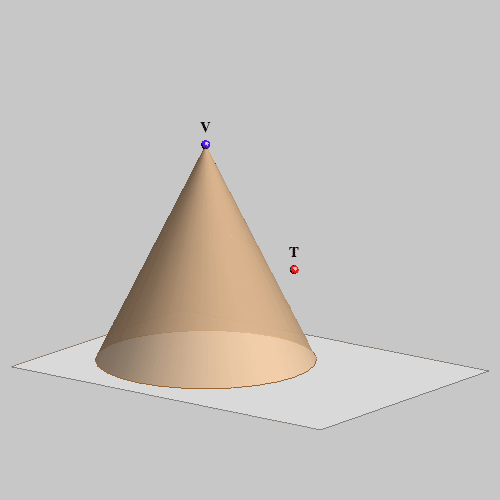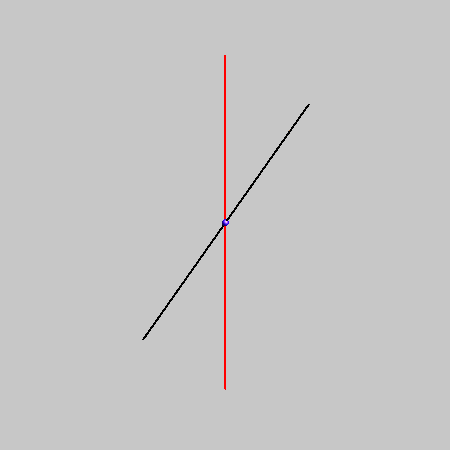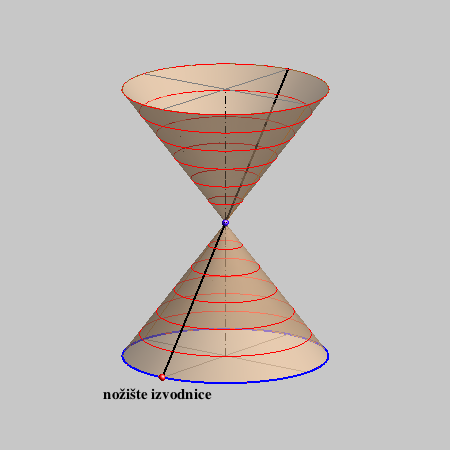|
A plane at infinity of the extended euclidean space doesn't contain the vertex
of a cone - it intersects the cone in a real proper conic.
Points of this conic are points at infinity of generatrices of the cone. This conic is not an ellipse, a parabola or a hyperbola; all points on this conic are points at infinity. |
Tangent plane of 2nd degree cone
|
All tangent planes of the cone contain its vertex. All other points of a cone are regular - they have an unique tangent plane. |
|
This planes can be real or imaginary. A construction of these planes is given in the animation on the right. |

Click on the image to start the animation. |

